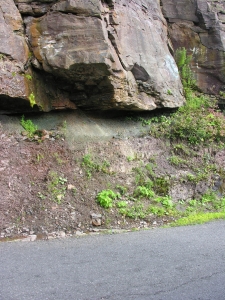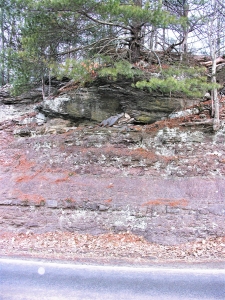Cold enough for you? Jan. 13, 2022
Cold Enough for you?
The Register Star
Updated by Robert and Johanna Titus
Jan 13, 2022
Our Catskill region summers generally bring wonderful weather with dry air and cool nights. Our Catskills Autumns are spectacular with their foliage. Our winters are dreadful and once again it is that time of the year. We stoically accept the onset of another cold season and make do with the holidays as some sort of compensation. Few of us, however, know or even wonder why we must endure this annual season. Do you? Many of you might be able to give a reasonably good explanation for our winter season in terms of the Earth’s orbit about the Sun. Many, or even most, of you, however, might flub the story; it is just a little too complex for a quick, glib explanation.
But it really doesn’t matter; we are not interested in the standard astronomical explanation of winter. We would like to consider a deeper reason, in fact, the real reason it is cold out there right now, and that has little to do with the Earth’s orbit and it has a lot to do with the Catskills and their geological history. If that surprises you then read on:
Even if your astronomy is not very good, most of you can probably run through a quick description of the Greenhouse Effect, it’s one of the leading environmental fears we face today. Briefly, our world’s industries are burning fossil fuels and pumping out large quantities of carbon dioxide into the atmosphere. Carbon dioxide traps solar energy much the way the glass traps solar energy in a greenhouse. As industrial production of carbon dioxide continues, it may be that the Earth’s climate will warm up with all sorts of unfortunate side effects. Such a fate is sometimes referred to as the “Greenhouse Earth.”
But what if it were the other way around? What if the quantities of carbon dioxide were declining instead of increasing? That gets us to a term which is rarely used – the “icehouse Earth.” That’s certainly not anything that anyone has been much worried about, but it actually has happened, and that gets us back to the Catskills.
The Catskill Mountains are composed of sedimentary rocks that date back to the Devonian time period. This was a time when the world was truly a Greenhouse Earth. There was 16 times as much carbon dioxide in the atmosphere then as is today. That greenhouse effect must have been enormous. But it was not to last. Off to the east, in what is today’s New England, there was a rising mountain range – the Acadian Mountains. As their uplift continued, they reached elevations that may have rivaled those of the Himalayas. Rising mountains are subject to chemical weathering and erosion. Those processes converted Acadian mountains into sediment which, eventually, hardened into the rocks of the Catskills. What is critical here is that the processes of chemical weathering consume carbon dioxide, they take it right out of the atmosphere. As the Acadians weathered away and the sediments of the Catskill accumulated, the amounts of carbon dioxide in the atmosphere dropped dramatically, from 16 times as much as today to something closer to modern levels. This, as you might guess, resulted in a reversal of the greenhouse effect and quite a cooling of the climate. In fact, there was an early ice age at the end of the Devonian Period???
There is plenty we don’t understand about this story, but this was a turning point in Earth history. Carbon dioxide would never again be as abundant as it was during the early Devonian. It levels would rebound again during the age of the dinosaurs and those great naked monsters certainly must have enjoyed the temporary restoration of the greenhouse heat. But there simply would never again be so much carbon dioxide and the climate would slowly deteriorate, with cooling temperatures, especially during the last 60 million years. Some argue that this is what caused the extinction of the dinosaurs. There is a good argument to be made too. Winters, which probably had not been much of a problem during the early Devonian, slowly become colder and more distinct from the rest of the year. The process has continued right into our time. In reality, even if industrial pollution continues unabated, ours is still a time of an icehouse Earth. Glaciers in Antarctica and Greenland attest to that.
So, are the Catskills responsible for winter? Well, that’s a bit of a stretch, but it is fair to say that the many processes that came to produce the Catskills were all part of a climate machine that eventually created the icehouse Earth climate that we can look forward to for the next two months.
Contact the authors at randjtitus@prodigy.net. Join their facebook page “The Catskill Geologist.”

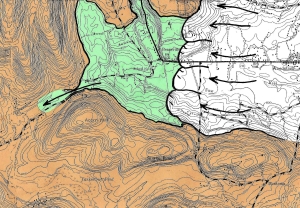

 Varves
Varves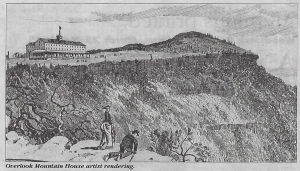
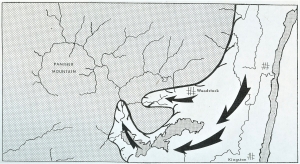

 Top of Comeau drumlin.
Top of Comeau drumlin. Comeau drumlin just right of center.
Comeau drumlin just right of center.